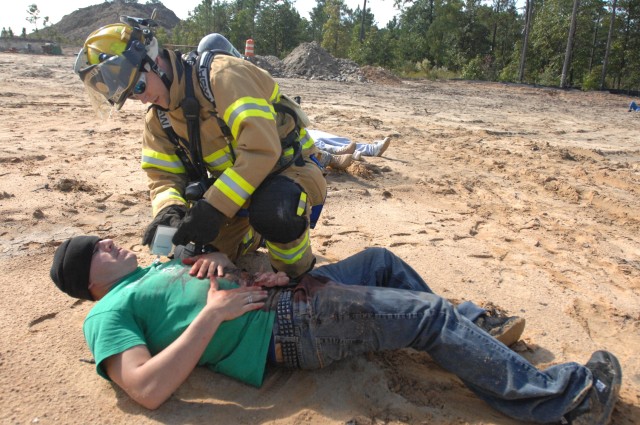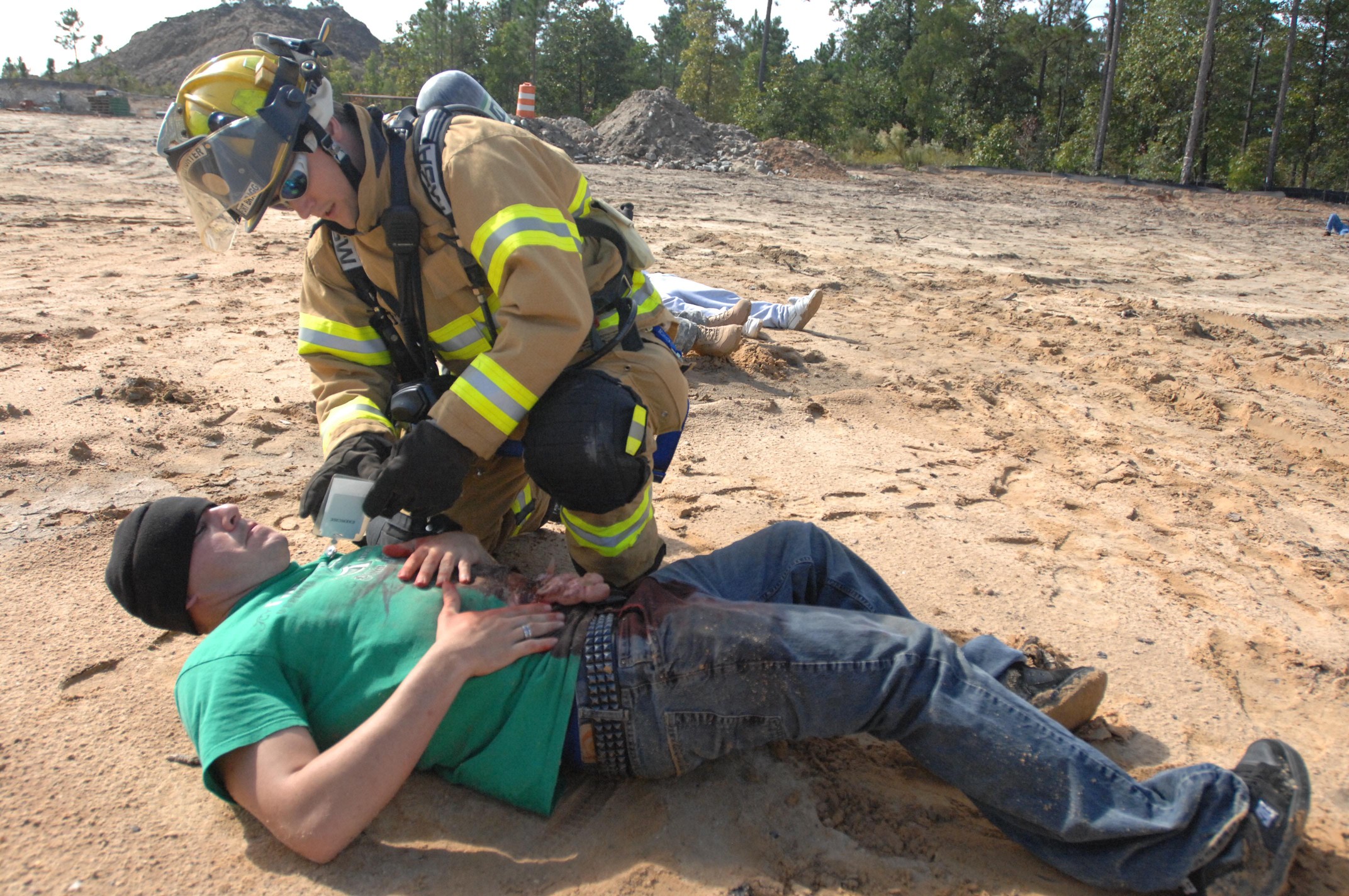FORT BRAGG, N.C. - A C-130 pilot relaxes as he conducts a routine flight with 60 paratroopers ready to jump onto the Northfield Drop Zone. Suddenly the pilot notices the number four engine having problems. Before he can react, the plane shudders as the engine explodes and bursts into flames. The engine shrapnel shreds the wing and the tail section of the plane apart. The pilot calls to the flight control tower and utters the words he prayed he would never have to say, "Mayday! Mayday!"
What would have been a horrible situation was nothing more than an exercise to allow emergency responders from Harnett County, Fort Bragg and Pope Air Force Base to test their skills during a mass casualty exercise at the Linden Oaks housing community Oct. 6.
"A mass casualty exercise allows people to train in a low risk environment on procedures they would have to use in a high-risk environment," said Marsha Lunt who serves as an emergency manager at the Womack Army Medical Center.
Though each organization conducts its own training once a month, all three organizations come together once a year to conduct a mass training exercise.
"We try and conduct training that would include all of the surrounding organizations so we can understand how each organization functions and build better relationships," said Lunt.
The exercise began early in the day when volunteers from around Fort Bragg came together at the theater on the corner of Macomb and Reilly streets for a moulage, where they would receive makeup giving them appearances of wounds suffered from the accident. The moulage allows the responders to immediately see the injuries that the "victims" have sustained, allowing for more realism during the training, said Lunt.
Once the volunteers were finished with their moulage, they were bussed to the Linden Oaks housing community so the initial crash site could be staged. The staging site included an actual, controlled fire with 60, fake blood-covered volunteers laid out across a section of barren land in the housing community.
"We laid the volunteers out in the open field and had the controlled fire to fully simulate a crash scene causing the firemen to multi-task with the fire and survivors," said Lunt.
The first to respond to the exercise was the Fort Bragg Fire Department. Upon their arrival, they first began to assess the casualties as quickly as they could while communicating back to their headquarters for help.
As soon as the call for other fire and ambulatory emergency services was sent out emergency vehicles from Pope, Harnett County and Fort Bragg began to arrive on the training site to help extinguish the fire and treat the patients. "Communication is one of the most important things in a situation such as this," said William McCammitt, assistant chief, Fort Bragg Fire Department.
"The exercise gives us the confidence to effectively communicate to all organizations so that we can be prepared for a situation like this in the future."
Once the immediate responders were done putting out the fire and treating the injured, the volunteers were once again loaded onto a bus so that the second part of the training could begin.
"Due to the fact that all of the organizations have to be ready to respond to a real world scenario out side of the training, we performed everything on a strict timeline," said Lunt.
The second part of the training required all the volunteers to be laid out once again, only this time outside of the emergency entrance of the Womack Army Medical Center to simulate the rush of patients that the hospital would receive during a high casualty situation.
Everyone from nurses to chaplains began to accept the incoming patients where they began to reassure them and rush them to the appropriate hospital section.
The "patients" were rushed everywhere to include the delayed immediate minimal expectant unit and the intensive care unit, said Lunt.
"In the end, everything went really well, there were no large hiccups and everyone communicated properly to the appropriate organizations," he said.
The mass casualty exercise seemed to prove the value of the training for the emergency responders from Harnett County, Fort Bragg and Pope Air Force Base, especially the need for good communication in any situation.


Social Sharing